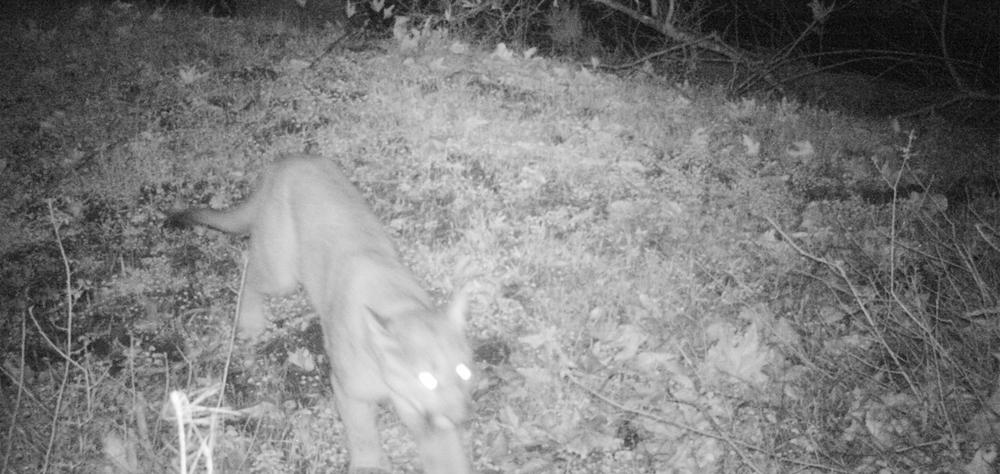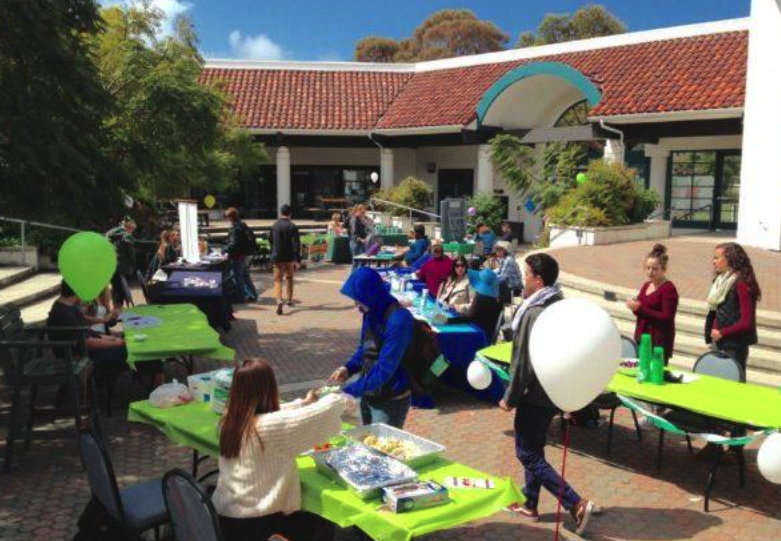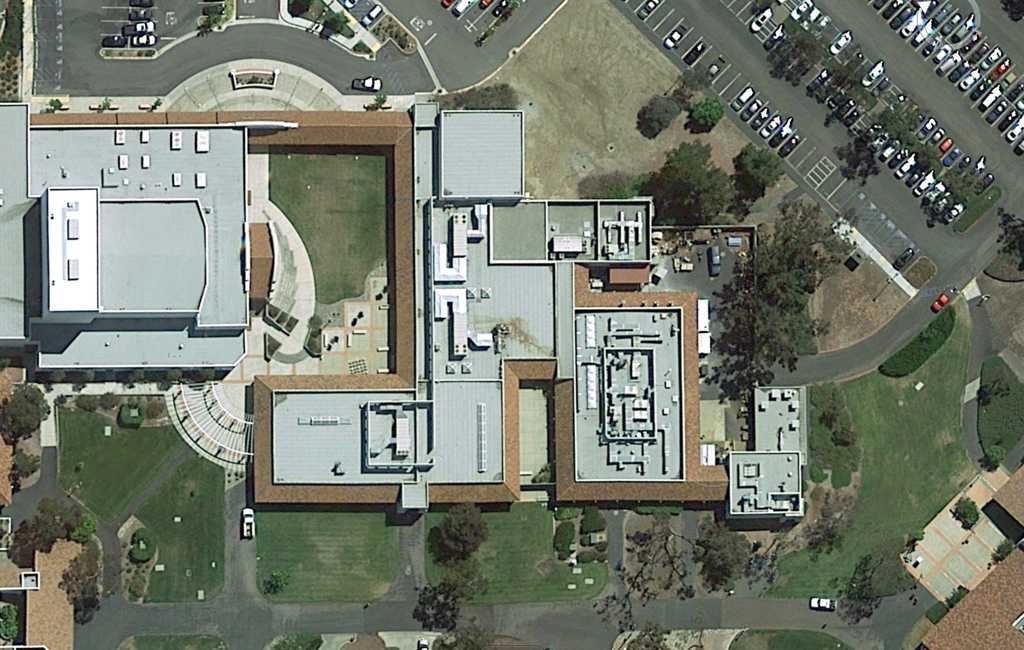Mountain lion caught on infrared camera visiting the Cuesta College campus.
Photo courtesy of Cuesta College Biology Department
By Taylor Nation
Special Contributor -Â Journalism 201A
The apparent increase of mountain lions on the Central Coast might have local hikers on their toes these days.
Many residents of SLO County have seen the viral video of two mountain lion cubs caught on surveillance video at the front door of a Prefumo Creek Estates home, near the Irish Hills recreational area. The video was posted on social media and in local news reports of the cats–literally–knocking on the door of a house.
Since 2000, 130 depredation permits have been given out by the California Department of Fish and Wildlife permits issued primarily to individuals that have experienced loss of livestock or damage proven to be caused by a mountain lion.
This number is not inclusive of the number of “sightings†that have been reported to law enforcement—about 100 in the past few years, according to The Tribune.
SLO County is ranked 7th out of the 59 counties in California for depredation permit issuance, but it is unknown if this is correlated with higher population of lions or just coincidental.
Officials from California’s Department of Fish and Wildlife have just recently began researching lions in the area, so there will be more information to come.
It is just human nature to become uncomfortable when hearing about mountain lion sightings in local recreational areas, so Cuesta College Biology Professor Ron Ruppert offers advice for those feeling apprehensive about heading out on the trail.
“Almost always the lion stuff is overblown because they do occasionally kill people,†Ruppert said. “The number of deaths by a mountain lion is so small versus the amount of deaths by a bee sting or climbing rocks. You don’t avoid going hiking because you are worried about getting stung by a bee or falling off a cliff while rock climbing.â€
Since 1890, there have only been 16 verified attacks on humans with six being fatal by mountain lions in all of California, according to the California Department of Fish and Wildlife.
Cuesta’s biology department has set out five game cameras near Chorro Creek towards the back end of the school’s property in hopes of catching a mountain lion on camera. Since the spring of 2015, the cameras have recorded five mountain lions, the most recent sighting being March 16 of this year.
It took over a year to actually capture the image of a cat on camera. So far this year, two mountain lions have already passed by.
It is possible that some of these mountain lions could be the same culprits of recent sightings, as male mountain lions patrol an area of about 115 square miles in summer and 135 square miles in the winter, according to Heather Curran of the Cuesta College biology department.
Mountain lions are much more active at night, which could potentially pose a threat to the city of San Luis Obispo’s new winter night trail use program.
In the midst of buzz about recent mountain lion sightings in San Luis Obispo County, it is important to be informed of what to do when encountering a mountain lion.
According to Ruppert, when finding yourself face to face with a lion, it is important to stand upright and make yourself look as large as possible. Ruppert added people should face the lion, and back away very slowly, allowing enough space for the lion to have an escape route.
Do not turn and run, or set in any way that could make you seem like the lion’s next meal, Ruppert said, adding people should keep a medium to large sized dog on-leash to offer some extra protection in a moment like this.
The California Department of Fish and Wildlife states that a person is actually 1,000 times more likely to be struck by lightning than be attacked by a mountain lion.
“Humans walk on two feet, they talk, and are very different from what a mountain lion targets as prey–deer,†Ruppert said . “Mountain lions are very secretive animals. Chances are, you have been near one while on the trail, and you are still here today.â€





















